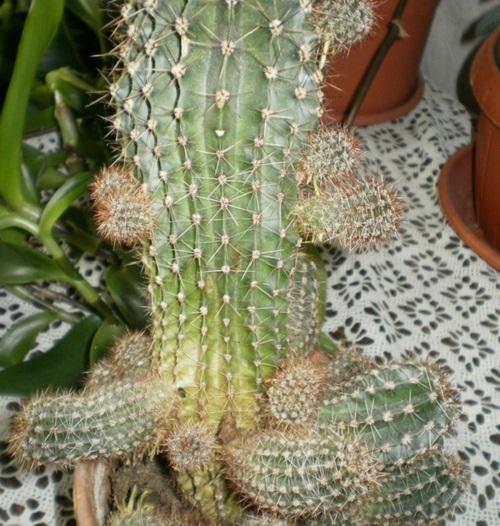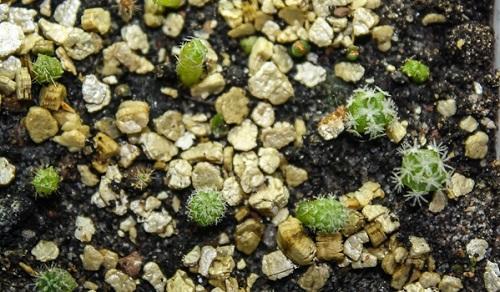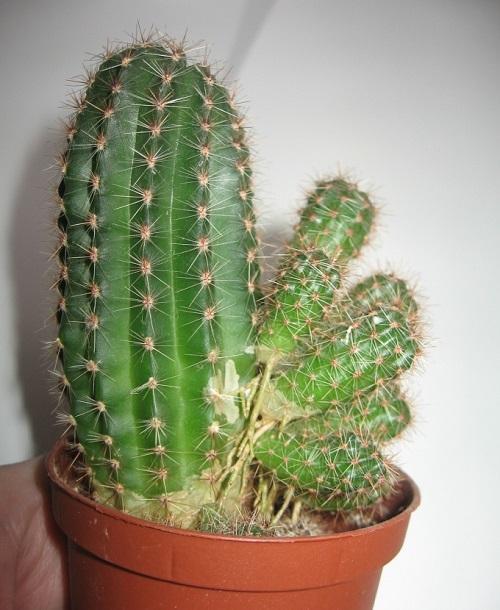We propagate a cactus at home
 Cactus growers know that this is a very interesting business, albeit quite troublesome. The reproduction of such plants is no less interesting, because, unlike most indoor flowers, they do not have leaves in our usual sense. However, this nuance does not at all interfere with obtaining new copies using both generally accepted methods and special approaches.
Cactus growers know that this is a very interesting business, albeit quite troublesome. The reproduction of such plants is no less interesting, because, unlike most indoor flowers, they do not have leaves in our usual sense. However, this nuance does not at all interfere with obtaining new copies using both generally accepted methods and special approaches.
So, you can propagate a cactus in two ways:
- seed;
- vegetative.
Features of seed reproduction of cacti

Sow seeds cactus it is possible throughout the spring, and some of their varieties - even in August (in particular, South American). To do this, pour a nutrient substrate, consisting of an equivalent mixture, into a shallow dish with drainage holes:
- leafy land;
- turf land;
- coarse sand.
Besides, in substrate it is necessary to add a little charcoal (no more than 0.5 parts), previously crushed.
Seeds must be prepared before sowing: soak overnight in warm water, and then for 10 minutes in a solution of potassium permanganate. Dry after disinfection.
Using a stick, make shallow grooves and put the seeds in them, making an indent of 1 cm between them. Instead of surface watering, the bowl should be placed in a bowl of water. When the earth absorbs moisture, cover the container with foil or glass and put it on a light windowsill, where it is warm. In the future, watering is carried out by spraying. After the emergence of shoots, the greenhouse can be opened, and when the first thorns appear on them, the cacti can be dived into separate pots.
Not all cactus species form seeds, so vegetative propagation is still used for most of them.
Methods for vegetative cultivation of cacti
This method is more often used by flower growers. It consists in rooting:
- Kids... This is the name of the shoots - full-fledged young plants that are formed on an adult flower of some types of cactus. They almost always have their own root system, so they root well and quickly. In most species, babies crumble themselves, but there are also such cacti where they have to be torn off.

- Cherenkov. It is used for propagation of columnar cacti and plant species with long non-segmented shoots. In the first case, you should cut off a stalk up to 15 cm long and "round off" its lower part so that the roots grow from the center. Most varieties require drying of the cuttings, but some cacti can be rooted immediately (ripsalis, epiphyllums). Leafy cacti reproduce using leaf pieces.

The most viable are children and cuttings taken from the top of the cactus, and it is better to start this method of flower reproduction before the growing season or after its end.
In addition to the listed methods, there is another very interesting method for propagating cacti - grafting two different plants.Most often it is used for those species that are difficult to grow on their own or for experimental purposes to obtain an original copy. Also, this method is quite acceptable if you need to urgently save a flower that has lost its roots. As a rootstock, it is necessary to choose varieties with fast growth and the absence of children.